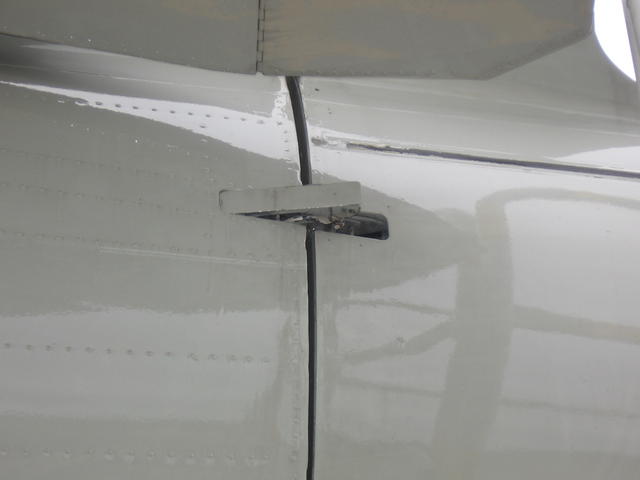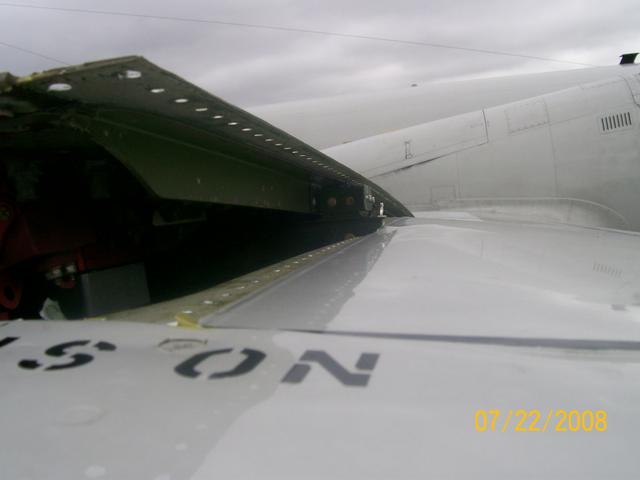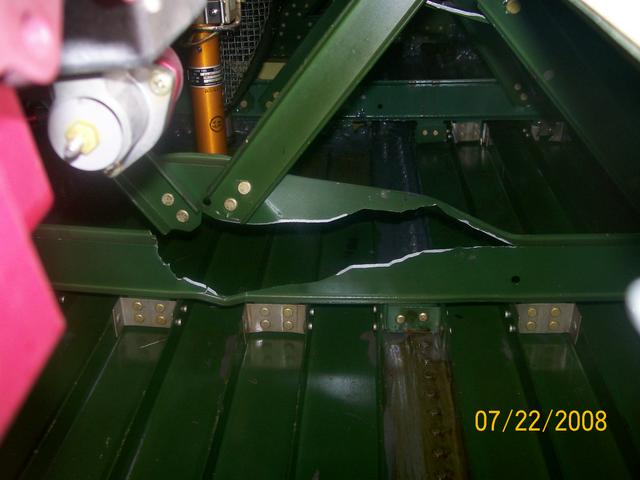Leeham News and Analysis
There's more to real news than a news release.
Remarkable luck, piloting
We were one of many to receive an email about a near crash of a Lockheed P-3 Orion stationed at Whidbey Naval Air Station, north of Seattle. The text describes the in-flight incident; the photos illustrate the text.
There was a remarkable bit of piloting and luck on this one.
Text of email:
Tuesday, 22 Jul 2008, a P-3 Orion from VP-1 was flying an approach to NAS Whidbey Island with the #1 engine in a simulated failure mode. At 160 KIAS, the #2 engine started to surge, so they had to chop power to it. As all this was happening, they were still decelerating, so by the time they added power to #3 and #4, they were at 122 knots, and in the dry terms of investigators, “departed controlled flight.” The P-3 did FIVE rotations in a flat spin, dropping 5500 feet, finally recovering between 50 and 200 feet AGL (above ground level), pulling a whopping 7 positive G’s on the airframe after sustaining 2.4 negative G’s in the spin. The rolling pullout burst 45 rivets on one wing, physically RIPPED the main spar, and bent the entire airframe… the crew could see INSIDE the fuel tanks of the wing.
The P-3C that almost went into Puget Sound waters was from NAS Whidbey. It was a CPW-10 aircraft being operated by VP-1. Squadrons don’t own aircraft any more. The P-3 fleet has so deteriorated because of under-funding and over-use that there are less than 100 still flyable*. The P-3s belong to the wing and are “lent to the squadrons on an as-needed” basis.
The mission was a NATOPS pilot check, with a CPW-10 pilot (LT) aboard, a VP-1 LT and LTJG, plus VP-1 aircrewmen that included two flight engineers. The bird was landed back at NASW. Max damage was sustained by the aircraft, including almost tearing off a wing. Aircraft BuNo 161331.
At Whidbey, P-3C 161331 was doing a Functional Check Flight. They could see the inside of the fuel tanks when they landed. SDRS recorded the flaps being raised and the landing gear being cycled down and then back up. Aircraft released all the fuel in tank #3 when it appears that the seam between planks 3 and 4 split. Tank #4 also lost its fuel load when plank #1 separated from rest of the aircraft wing.




